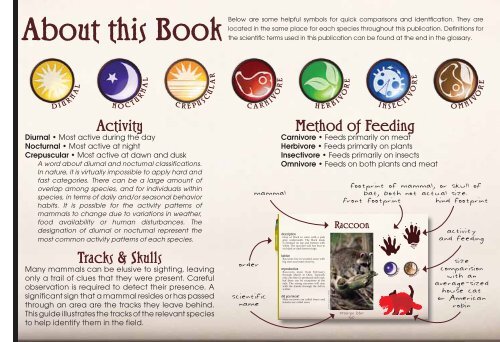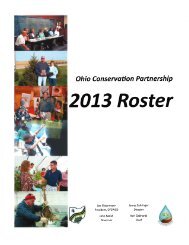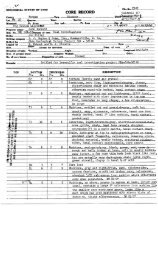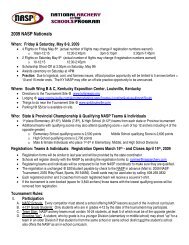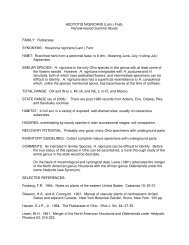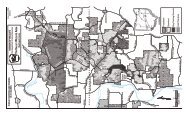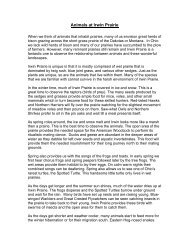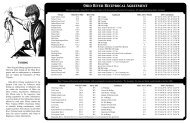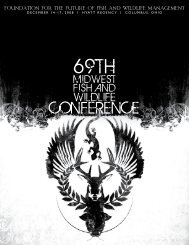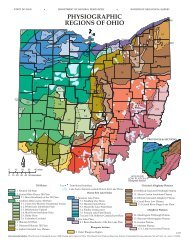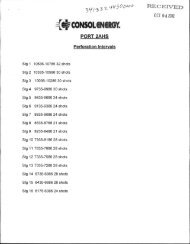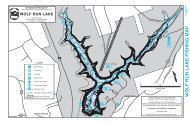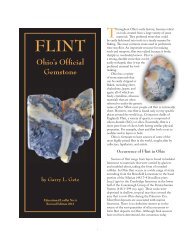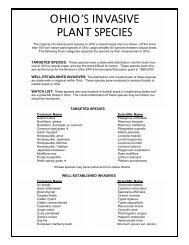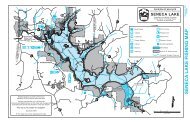MAMMALS OF OHIO f i e l d g u i d e
MAMMALS OF OHIO f i e l d g u i d e
MAMMALS OF OHIO f i e l d g u i d e
Create successful ePaper yourself
Turn your PDF publications into a flip-book with our unique Google optimized e-Paper software.
About this Book<br />
Below are some helpful symbols for quick comparisons and identfication. They are<br />
Activity<br />
Diurnal • Most active during the day<br />
Nocturnal • Most active at night<br />
Crepuscular • Most active at dawn and dusk<br />
A word about diurnal and nocturnal classifications.<br />
In nature, it is virtually impossible to apply hard and<br />
fast categories. There can be a large amount of<br />
overlap among species, and for individuals within<br />
species, in terms of daily and/or seasonal behavior<br />
habits. It is possible for the activity patterns of<br />
mammals to change due to variations in weather,<br />
food availability or human disturbances. The<br />
designation of diurnal or nocturnal represent the<br />
most common activity patterns of each species.<br />
Tracks & Skulls<br />
Many mammals can be elusive to sighting, leaving<br />
only a trail of clues that they were present. Careful<br />
observation is required to detect their presence. A<br />
significant sign that a mammal resides or has passed<br />
through an area are the tracks they leave behind.<br />
This guide illustrates the tracks of the relevant species<br />
to help identify them in the field.<br />
located in the same place for each species throughout this publication. Definitions for<br />
the scientific terms used in this publication can be found at the end in the glossary.<br />
CARNIVORA<br />
Method of Feeding<br />
Carnivore • Feeds primarily on meat<br />
Herbivore • Feeds primarily on plants<br />
Insectivore • Feeds primarily on insects<br />
Omnivore • Feeds on both plants and meat<br />
description<br />
Gray or black in color with a pale<br />
gray underneath. The black mask<br />
is rimmed on top and bottom with<br />
white. The raccoon’s tail has four to<br />
six black or dark brown rings.<br />
habitat<br />
Raccoons live in wooded areas with<br />
big trees and water close by.<br />
reproduction<br />
Raccoons mate from February<br />
through March in Ohio. Typically<br />
only one litter is produced each year,<br />
but there can be exceptions to the<br />
rule. The young raccoons will stay<br />
with the female through the fall or<br />
winter.<br />
did you know?<br />
Male raccoons are called boars and<br />
females are called sows.<br />
© Ohio Division of Wildlife<br />
Raccoon<br />
Procyon lotor<br />
60


